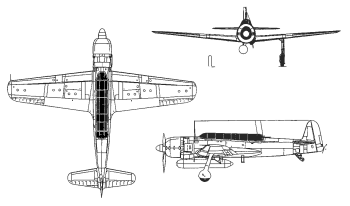



The Japanese designed a number of unique aircraft during World War II, one such example was the Nakajima C6N Saiun (Painted Cloud), a dedicated carrier-based reconnaissance platform which was undoubtedly one of the great unsung aircraft of the war. Its great success lay in its amazing performance figures: its speed was unmatched by any other IJN aircraft (only the Ki-84 was faster), it had excellent high altitude performance and range, as well as advanced design features such a laminar flow wing with six integral fuel tanks, large observation windows, and camera portholes. The C6N was first used operationally during the Marianas campaigns and generally was involved in shadowing the US fleet throughout the Pacific where it was virtually immune from interception on account of its speed and service ceiling. Some aircraft were converted to night fighters but suffered from lack of radar; a C6N was also the last aerial kill of war, shot down by a US Navy pilot just 5 minutes before the end of hostilities.
First flown on 15 May 1943, the Saiun was followed by numerous additional prototypes and pre-production aircraft culminating in the C6N1 Model 11s, the first and only major production variant. Some of these were converted to night fighters and known as the C6N1-S while an experimental C6N2 was also developed as such and was characterized by turbocharged Homare 24 engines.
Preceded by:
NoneSucceeded by:
None | |
| Design | C6N1 |
| Name | Saiun |
| Code Name | Myrt |
| Type | Reconnaissance |
| Year | 1944 |
| Crew | 3 |
| Dimensions | |
| Length | 11 m |
| Height | 3.960 m |
| Wing Span | 12.50 m |
| Wing Area | n/a |
| Weight | |
| Empty | 2,968 kg |
| Maximum | 5,260 kg |
| Wing Loading | 206.3 kg/m² |
| Performance | |
| Speed | 610 km/h |
| Ceiling | 10,740 m |
| Range | 3,080-5,310 km |
| Powerplant | |
| Engine | 1 x NK9B Homare 21 Nakajima 1,484 kW |
| Thrust/Weight | 0.61 |
| Armament | |
| Guns | 1 x 7.7-mm |
| Payload | - |
| Production | |
| Built | 462 |
| Total | 463 |